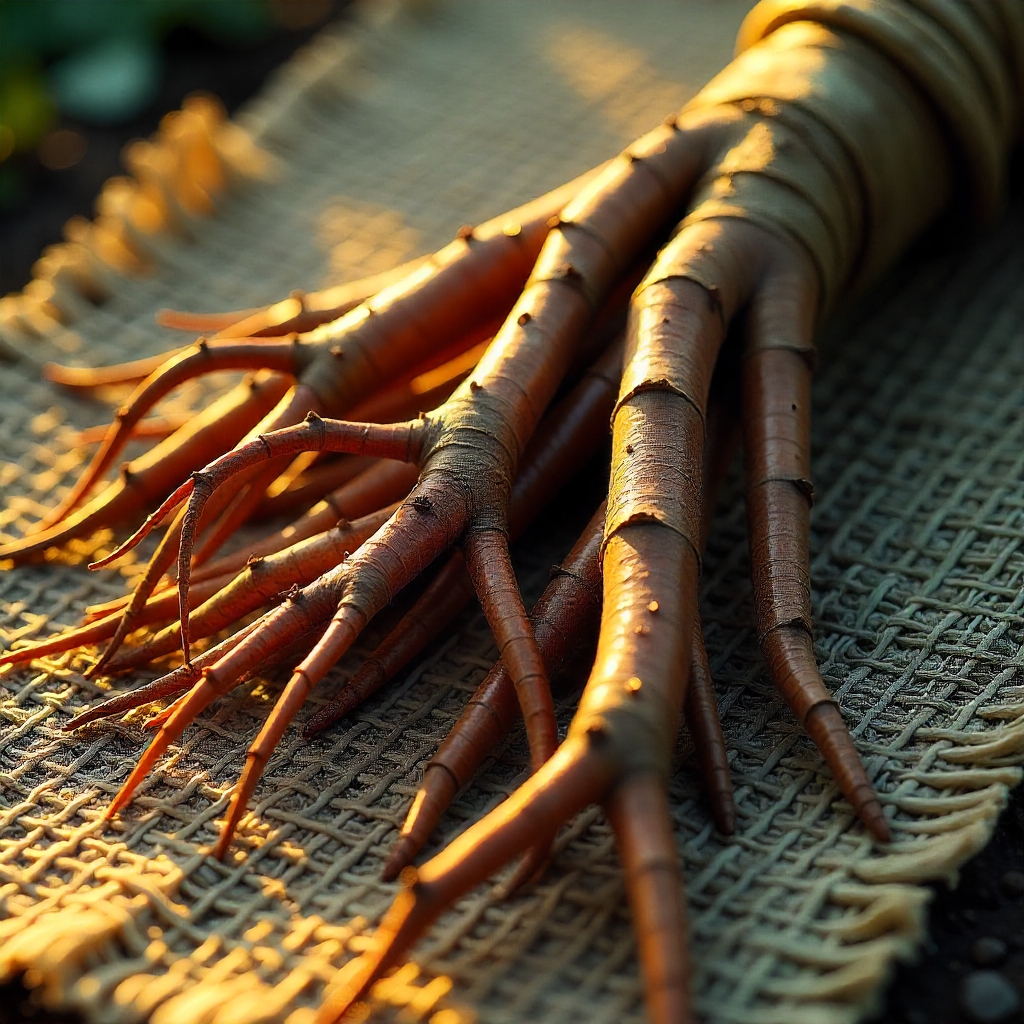If you’ve ever walked through a traditional Ayurvedic garden, you may have noticed a slender, woody climber with a sweet aroma emanating from its roots. That is Anantmool (Hemidesmus indicus), a plant that has quietly served as a healer for centuries. Known by various names such as Indian Sarsaparilla and Nannari, this perennial creeper thrives across the Indian subcontinent. Its roots spread deep into the soil, carrying with them stories of folk remedies, cooling tonics, and age-old healing practices.
Why Anantmool Matters Today, In a world flooded with modern medicines and quick fixes, Anantmool has resurfaced as a natural alternative for detoxification, skin health, immunity, and even balancing hormones. Ayurvedic texts celebrate it as a “Rasayana”—a rejuvenator of body and spirit. Today, herbal enthusiasts and health seekers are rediscovering its charm, not just for its medicinal benefits but also for its cultural legacy. Whether in a refreshing summer sherbet in South India or as a key ingredient in herbal remedies, Anantmool continues to remind us why plants often hold the answers we seek.
7 Best Alternatives to Anantmool (Hemidesmus indicus)
- Ashwagandha (Withania somnifera) – India
Often called “Indian ginseng,” Ashwagandha is a powerful adaptogen used to boost strength, immunity, and reduce stress. Like Anantmool, it’s widely cultivated in India and valued for its rejuvenating effects. - Guduchi (Tinospora cordifolia) – South Asia
Known as Amrita in Ayurveda, Guduchi is celebrated for its detoxifying properties. It supports liver health, boosts immunity, and is especially popular in India and Nepal as a disease-fighting herb. - Shatavari (Asparagus racemosus) – India & Sri Lanka
Called the “Queen of Herbs,” Shatavari is a popular alternative for women’s health, helping balance hormones and support reproductive wellness. Found mostly in India and Sri Lanka, it is a gentle yet powerful restorative. - Licorice Root (Glycyrrhiza glabra) – Middle East & South Asia
Licorice has a sweet taste and cooling properties similar to Anantmool. Used in traditional medicine across India, Iran, and Greece, it helps soothe the respiratory system and purify the body. - Brahmi (Bacopa monnieri) – India
Brahmi is another Ayurvedic herb known for enhancing memory, reducing anxiety, and promoting overall vitality. Like Anantmool, it grows abundantly in Indian wetlands. - Sarsaparilla (Smilax spp.) – Central & South America
Often confused with Anantmool due to similar flavor and medicinal properties, this vine from South America is widely used for blood purification and skin diseases. - Manjistha (Rubia cordifolia) – Himalayan Regions
Manjistha is a traditional blood purifier and skin tonic. It shares similarities with Anantmool in detoxifying properties and is mostly found in the Himalayan belt of India and Nepal.
When and Where
Anantmool’s story begins deep in India’s fertile plains, where it grows as a creeping vine hugging trees and shrubs. Traditionally, it is harvested after the monsoon season, when the roots are at their most potent. In Ayurveda, the timing of harvest is crucial—it is believed that the prana, or life force, of a plant is strongest during certain seasons.
The herb grows abundantly across India, Sri Lanka, and parts of Southeast Asia. In southern India, especially in Tamil Nadu and Kerala, Anantmool roots are turned into refreshing Nannari sherbet—a summer drink that cools the body and aids digestion. In the north, its roots are dried, powdered, and used in formulations for blood purification and skin health.
Traditionally, village herbalists source Anantmool by carefully digging its roots, drying them in shade, and preserving their natural aroma. Healers and Ayurvedic doctors (Vaidyas) have used it for centuries to balance the three doshas—Vata, Pitta, and Kapha. Interestingly, there are related species like Hemidesmus pubescens and Hemidesmus indicus var. pubescens, which are sometimes used interchangeably in local medicine.
Who Uses Anantmool?
From the Ayurvedic physicians of Kerala to the folk healers of rural Bengal, Anantmool has had a long and respected history. In southern India, women often prepare Nannari syrup at home as a natural coolant for their families. In tribal belts of Madhya Pradesh and Chhattisgarh, the root is used in decoctions for skin ailments and rheumatism.
The Siddha and Unani systems of medicine also hold Anantmool in high regard. In Unani, it is considered a tonic for purifying the blood and soothing inflammation. Meanwhile, Ayurveda calls it Sariva, celebrated as one of the Dashamoola herbs in some traditions. Its reach even goes beyond India—Southeast Asian cultures also use it in various detoxifying remedies.
Why Use Anantmool?
People seek Anantmool for many reasons, and it often comes down to its broad healing spectrum:
- Detoxification & Blood Purification – Removes toxins, clears skin issues like eczema and acne.
- Cooling Properties – Helps balance excess heat in the body, beneficial in fevers and Pitta-related disorders.
- Digestive Aid – Used for indigestion, loss of appetite, and acidity.
- Hormonal Balance – Traditionally prescribed for menstrual irregularities and reproductive health.
- Immunity & Strength – Acts as a rejuvenator, much like Ashwagandha.
Culturally, Anantmool has also been associated with rituals. Some communities use its roots in religious ceremonies, symbolizing purification and grounding.
Which Parts of Anantmool Are Used?
The root is the star of Anantmool. It carries the sweet, earthy fragrance and medicinal compounds that make it so valuable. Roots are typically dried and powdered, or made into decoctions and syrups.
The stems and leaves are occasionally used, though not as commonly. In folk medicine, leaf poultices are applied to wounds or skin irritations. But the root remains the most respected part, forming the base of Ayurvedic formulations.
How to Use Anantmool?
Traditionally, Anantmool is consumed in several ways:
- Decoction (Kashayam) – Roots are boiled in water until concentrated, then consumed for detoxification and immunity.
- Syrup (Nannari Sherbet) – Popular in South India as a cooling summer drink.
- Powder (Churna) – Dried roots are powdered and taken with milk or honey.
- Topical Application – Pastes made from the root are applied to skin problems.
Precautions:
- Pregnant and lactating women should consult a physician before use.
- Overconsumption may cause nausea in sensitive individuals.
- Always source from trusted herbal suppliers to avoid adulteration.
Important Facts About Anantmool (Hemidesmus indicus)
- Botanical Family: Apocynaceae
- Active Compounds: Hemidesmine, saponins, tannins, and flavonoids.
- Research Findings: Studies suggest anti-inflammatory, hepatoprotective (liver-protecting), and antioxidant properties.
- Potential Side Effects: Rare, but excessive consumption may upset digestion.
- Cultural Note: Used in summer festivals in South India as a refreshing, body-cooling drink.
FAQs on Anantmool (Hemidesmus indicus)
1. Is Anantmool safe to use daily?
Yes, in moderate amounts. It is commonly consumed as syrup or decoction.
2. Can Anantmool help with skin problems?
Yes, its blood-purifying properties make it useful for acne, eczema, and boils.
3. Where can I buy Anantmool?
It is available in Ayurvedic shops, online herbal stores, and sometimes as “Nannari syrup” in South India.
4. How fast does it show effects?
For cooling and digestion, effects are often felt within days. For deeper issues like hormonal balance, it may take weeks.
5. Does Anantmool interact with modern medicines?
Generally safe, but if you’re on liver or hormone-related medication, consult a doctor.
6. Is Anantmool the same as Sarsaparilla?
No, but they are often confused. Anantmool is Indian Sarsaparilla, while the Latin American Sarsaparilla is from a different genus.
Conclusion
Anantmool (Hemidesmus indicus) is more than just a root—it is a living piece of India’s healing traditions. From the Ayurvedic physician prescribing it for purification to the grandmother preparing Nannari syrup in summer, Anantmool’s story is woven into both medicine and culture.
Today, as the world leans back into natural remedies, Anantmool shines as a gentle yet powerful herb that detoxifies, cools, and rejuvenates. Its modern relevance lies not only in its health benefits but also in reminding us that wellness often lies in simplicity—roots, leaves, and age-old wisdom.
Exploring Anantmool is like connecting with an ancient rhythm of healing, one that still resonates in our fast-paced world. Use it responsibly, respect its heritage, and you may just find a natural ally for lifelong vitality.


